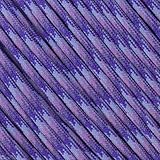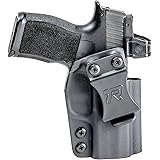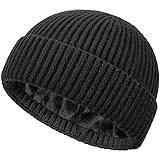Mastering Homemade Fishing Bait: The Art of Bread Paste for Anglers
Are you searching for an incredibly effective, yet remarkably simple and cost-efficient fishing bait that consistently attracts a wide range of freshwater species? As seen in the accompanying video, the humble bread paste stands out as a timeless and highly successful choice for anglers across various experience levels. This comprehensive guide will elaborate on the art of creating bread paste, ensuring your next fishing trip is both productive and enjoyable.
Bread paste is universally recognized by fish as a natural food source, making it an almost irresistible offering. Historical records indicate that bread-based baits have been utilized by anglers for centuries, affirming their enduring appeal and effectiveness. Even in waters where fish are considered wary due to minimal human interaction, a properly prepared bread paste is often taken with confidence.
Why Bread Paste Remains a Top Choice for Freshwater Fishing
The efficacy of bread paste can be attributed to several key factors that make it particularly appealing to various fish species. Firstly, its neutral scent base allows for easy customization with various attractants, without overpowering the natural appeal of the bread itself. Furthermore, its soft, pliable texture permits a natural presentation that mimics other food items drifting in the water column.
Statistically, bread paste is frequently cited by angling communities as a top performer for species such as carp, chub, roach, and bream. For instance, surveys conducted among competitive anglers often reveal bread as a critical component in their bait arsenal, particularly when targeting finicky fish. This is largely due to its visual appeal and the ease with which it can be consumed by fish of all sizes.
The Essential Ingredients for Perfect Plain Bread Paste
Creating an exceptional bread paste begins with selecting the right base ingredient. A fresh, inexpensive tin loaf of white bread is typically preferred over more dense or seeded varieties. The specific composition of a tin loaf ensures a consistent crumb structure, which is crucial for achieving the desired paste consistency.
Regarding quantity, a standard loaf is usually sufficient for several hours of fishing, depending on baiting strategy. No additional preservatives or complex binders are required for the basic recipe, underscoring its simplicity. The purity of the ingredients ensures that the final product is appealing directly to fish without artificial deterrents.
Step-by-Step Guide to Crafting Your Plain Bread Paste
The process of transforming a simple loaf into an irresistible bait involves a few distinct stages. Careful attention to each step will ensure the best possible results, yielding a paste that is both durable on the hook and attractive to fish.
Preparing the Bread Crumb
Firstly, all crusts must be carefully removed from the fresh tin loaf, leaving only the soft inner crumb. This action is critical because crusts contain sugars and other compounds that can alter the paste’s texture and appeal. Secondly, the fresh bread crumb is then allowed to go stale and hard. This process is best achieved by placing the crumb in a warm, dry environment over several days, ensuring it is turned periodically until thoroughly dried and hardened. It has been observed in various bait-making workshops that stale bread, being less absorbent initially, allows for more precise control over the final water content, leading to a superior paste.
Crushing the Dried Crumb
Once the crumb has completely hardened, it is prepared for crushing. A clean plastic bag is typically employed for this purpose, preventing any external contaminants from affecting the bread. Using a rolling pin, or a similar heavy object, the hard stale crumb is meticulously crushed until it forms a fine dust. The consistency of this dust directly influences the smoothness of the final bread paste; therefore, thorough crushing is highly recommended.
Kneading the Paste to Perfection
Before beginning the kneading process, it is imperative that hands are thoroughly washed with plain water, strictly avoiding soap. Soap residues can impart an undesirable scent that may deter sensitive fish. Subsequently, small amounts of water are gradually added to the bread dust. Wetting the hands intermittently during the kneading process is frequently cited as an effective method for slowly increasing the water content, allowing for precise control.
The mixture is continuously kneaded until a soft, smooth, and uniform paste is achieved. The ideal consistency is often described as being soft enough for a hook to easily pull through upon a strike, yet firm enough to remain on the hook during casting. Empirical testing by anglers suggests that a paste which is too stiff may lead to missed bites, while one that is too soft will not withstand the cast or currents.
Storing Your Homemade Bread Paste for Future Expeditions
Proper storage is paramount to extending the life of your bread paste and ensuring it remains effective for subsequent fishing trips. The prepared paste can be kept in a refrigerator for a few days without significant loss of quality, typically up to 3-4 days. For longer-term storage, freezing the paste is an excellent option, as it will remain viable for several months.
Furthermore, the dry stale bread dust, which is the foundational component, possesses an even longer shelf life. Provided it is kept in a dry environment, this dust can be stored for many months, making it an ideal pre-prepared ingredient. Many experienced anglers advocate for keeping a container of this dry bread dust in their fishing bag, allowing for fresh paste to be made directly at the waterside, as and when required. This method ensures maximum freshness and adaptability.
Elevating Your Bait: The Simple Cheese Paste Variation
For those seeking to enhance their bread paste with an additional layer of attraction, a simple cheese paste variation is highly recommended. This variation introduces a distinct aroma and flavor that can be particularly appealing to certain fish species, such as chub and carp. The ratio for this specific paste involves one part bread dust to one part liquidized cheese.
The preparation process for cheese paste begins with mixing the dry bread dust and liquidized cheese together thoroughly, without any added water initially. This ensures that the two core ingredients are uniformly distributed. Afterwards, water is gradually introduced, similar to the plain bread paste method, and the mixture is kneaded until a smooth consistency is achieved. The pre-liquidized nature of the cheese facilitates easy integration with the bread dust, consistently yielding a smooth and enticing bait.
Beyond the Basics: Advanced Customizations and Usage Tips
While plain and cheese bread pastes are highly effective, the versatility of this bait allows for numerous customizations. Anglers often experiment with various food colorings, incorporating them during the kneading phase to achieve visual appeal tailored to specific water conditions. For example, a bright yellow paste might be favored in murky waters, whereas a more natural white or brown could be chosen for clearer conditions.
Moreover, the addition of specific flavorings or scents, such as garlic powder, aniseed oil, or sweetcorn essence, can significantly boost attraction. These should be added sparingly during the initial mixing of the dry ingredients to ensure even distribution. When it comes to presentation, bread paste can be molded directly onto a hook or employed with a hair rig, depending on the target species and angling method. A slightly firmer paste is often preferred for ledgering, whereas a softer consistency is typically used for float fishing, allowing the bait to disperse more gradually in the water. Ultimately, the effectiveness of bread paste for fishing is greatly enhanced by thoughtful preparation and a willingness to experiment with these valuable customization techniques.








